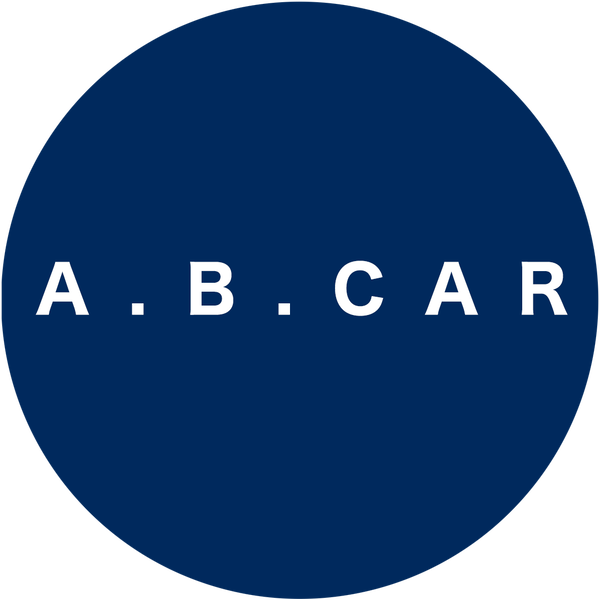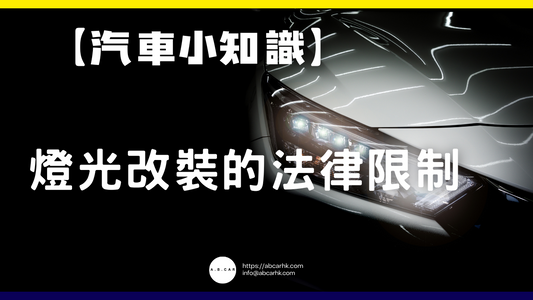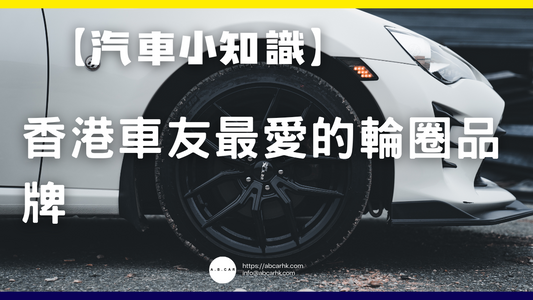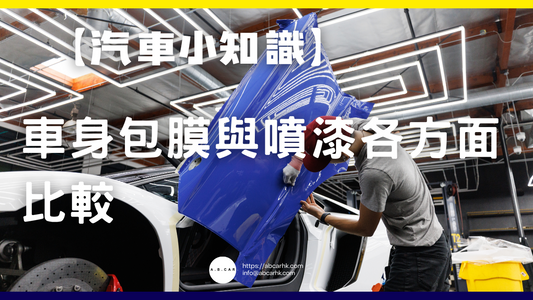[Lecture] How to combine public welfare and profit models | Editor: Ma Wensheng

🌱 Charity + Profit = A New Direction for Hong Kong Social Enterprises
In Hong Kong, we often hear about "social enterprises," "public welfare," and "doing good deeds," but at the same time, some people say, "Isn't the purpose of doing business to make money? Why do we have so many problems?" 🤔 In fact, the term "social enterprise" is now popular all over the world, and its focus is on "using business methods to solve social problems."
Simply put:
💰 Making money → can make the company sustainable ❤️ Doing charity → helping those in need or the environment. It’s no longer a “black or white” situation, but a “win-win model”.
1️⃣ Three major models combining public welfare and profit
🔸 1. The product or service itself has a public welfare element
This is the most direct approach, the product is equal to public welfare
- Environmentally friendly products♻️ : For example, there are some brands in Hong Kong that specialize in "bamboo fiber tableware" or "reusable eco-friendly bags". After you buy them, you are already helping to reduce waste
- Fair Trade products : For example, Fair Taste sells coffee and chocolate, and works directly with farmers to ensure they receive a fair income. When consumers buy these products, they are indirectly participating in public welfare.
🔸 2. Profits returned to society
Some companies prioritize making money first, then helping society.
- Donation model : For example, some restaurants will state that "for every meal sold, $1 will be donated to a certain charity."
- Reinvestment model : Some social enterprises reinvest their profits into social projects, such as supporting grassroots education and funding community activities. This model is easier to get started because the business logic remains unchanged, but with the added element of giving back to the public.
🔸 3. Employment opportunities equal public welfare
This is a typical Hong Kong social enterprise model
- Recruit vulnerable groups : For example, people with disabilities, those recovering from mental illness, and single mothers, to provide them with stable opportunities to return to work.
- Skills training : It is not just about finding a job, but also about training people to learn new skills and improve their competitiveness in the long run. This approach has the greatest social impact because it directly changes a person's life.
2️⃣ Real Cases of Hong Kong Social Enterprises🏙️
🍱 Food Angel
Problem : Hong Kong discards over 3,600 tons of food every day, yet many low-income families struggle to afford three meals a day.
Method : Collect leftover food from hotels, supermarkets, and restaurants, process it into free lunch boxes, and distribute them to the elderly and low-income families.
Profit elements : Some of the channel's activities require fees, such as corporate sponsorship of "Food Wise Education Workshops" or promotion of the "Food Wise Dining Partnership Scheme"
Public welfare impact : Helping those in need and promoting waste reduction awareness
☕ Fair Taste
Problem : Farmers in many developing countries have low incomes and are often exploited by middlemen.
Approach : Directly cooperate with farmers to ensure they have reasonable income
Profitability : Selling coffee, tea, and chocolate in retail format, and also has an online store.
Public welfare impact : When consumers buy products, they already support fair trade and help farmers improve their lives
🥟 Hung Fook Tong x Community Collaboration
Problem : Disadvantaged groups (such as women with low education and the elderly) have difficulty finding stable jobs.
Method : Provide training and employment opportunities through cooperative programs
Profitability : Continue to sell beverages and soups, but with an added layer of social responsibility
Public Welfare Impact : Social recognition has increased, with customers feeling that "every bowl of soup is supporting society."
3️⃣ The benefits of combining charity and profit🌟
🌟Long -term operation : Unlike traditional charities that rely on donations, social enterprises can be self-sustaining and are not afraid of running out of money. 🌟Attracting young consumers : Many people born in the 1990s and 2000s in Hong Kong attach great importance to values and believe that using money to support meaningful brands is a "vote for values."
🌟 Enhance brand image✨ : The company is not just a "money-making machine", but can also build a positive reputation 🌟 Employee sense of belonging🤝 : Employees feel that they are not just working to make money, but are also participating in causes that change society
4️⃣ How to start?
1️⃣ Focus on social issues 🕵️♂️: What issues can your company/product solve, such as waste reduction, employment, and education?
2️⃣ Design business logic 📊: Think clearly about the charging model and how to make money to ensure the sustainability of public welfare.
3️⃣Build a cooperative network : Collaborate with NGOs, schools, and government departments to amplify your influence
4️⃣ Tell a good story🎤 : Hong Kong people really value the “background story”. If you can sincerely share how you can impact society, customers will naturally support you.
5️⃣ Editor’s Summary
Charity and profit are not two separate things; they are two complementary forces. 🎯 If a company can achieve "making money while helping people," it will create a win-win-win situation:
- Consumers buy meaningfully
- Sustainable development of enterprises
- Society has improved
I sincerely believe that this model will become increasingly important in Hong Kong’s future.
📑 Simulate social enterprise planning plan
Theme: "Xiyifang" — A social enterprise that upcycles second-hand clothing 👕♻️
1️⃣ Social Issue Positioning
- Hong Kong discards more than 110,000 tons of textile waste every year, most of which goes to landfills.
- Low-income families, subdivided flat residents, and the elderly may not be able to afford new clothes 👵👶
- A group of middle-aged and older women and minority mothers want to return to work, but employment opportunities are limited.
👉 Social Enterprise Goal: To achieve the triple value of "environmental protection + employment + public welfare" by collecting second-hand clothing, upcycling and making new products, and creating employment opportunities.
2️⃣ Product and service design
- Upcycled second-hand clothing products : such as cloth bags, mask covers, eco-friendly bags, and pillows
- Affordable community clothing stores : low-income families can buy sorted clothes at low prices
- Workshop service : Organize "Upcycling Handicraft Classes" for schools and corporate CSR activities.
👉 There are three sources of profit: product sales 💵 + community store income 🛍️ + workshop fees 🎟️
3️⃣ Charity elements
- Employment opportunities : Hiring middle-aged and older women and mothers from ethnic minorities to participate in the sewing process, providing flexible working hours
- Community Support : For every 5 upgraded products sold, 1 second-hand clothing item will be donated to a grassroots family.
- Educational promotion : Carry out environmental education activities in schools to cultivate the concept of sustainable consumption among the new generation
4️⃣ Profit model analysis
- Upgraded product: average selling price $80, gross profit margin 40%
- Community clothing store: Average price per piece: $20, wins by volume while also taking into account social impact
- Workshops: $3,000-$5,000 per session, mainly targeting corporate CSR budgets
👉 Diversify your income portfolio to avoid over-reliance on a single source
5️⃣ Market Positioning
-
Main customer groups :
- Young people who care about environmental protection🌱
- Companies with CSR budget 🏢
- Grassroots families who need affordable clothing 👨👩👧
-
Brand image : Emphasizes "Buying a product = supporting the environment + helping the disadvantaged"
6️⃣ Promotion Strategy
- Social media promotion📱 : Share the story behind the upgraded product on Instagram/Facebook
- KOL collaboration : Find KOLs who promote eco-friendly lifestyles to help promote your products
- Community collaboration : Village and NGOs collaborate to collect clothing
- Flash Mob Event : Host an "Eco-Friendly Market" in a shopping mall to increase exposure
7️⃣ Cost budget (simulation)
- Rent + utilities: approximately $30,000/month (small community store)
- Salary: Approximately $60,000/month (6-8 part-time women)
- Material processing: approximately $10,000/month
- Marketing and promotion: approximately $15,000/month
👉 Total Cost: $115,000/month 👉 Expected Income: $130,000/month (Product + Store + Workshop)
👉 Expected profit: approximately $15,000/month (to be gradually expanded)
8️⃣ Public Welfare Impact Indicators (KPIs)
- Weight of clothing recycled annually (e.g. 50 metric tons)
- Number of households benefiting each year (e.g. 1,500 households)
- Number of disadvantaged women employed (e.g. 20)
- Number of educational workshops held (e.g. 80)
9️⃣ Long-term development direction
- Expand to online platform and do second-hand clothing auction🛒
- Collaborate with local designers to launch a "Charity Joint Series" 👗
- Seek government funding and fund support to expand the scale📈
🎯 Editor's Summary
This mock project, "Xiyifang," is an example of how to combine profit and charity:
- Product sales → guaranteed income
- Employment Opportunities → Helping the Disadvantaged
- Environmental education → Expand social impact
Simply put, it is not just a business, but a "business with soul" 💚
⚠️ Risk Analysis + Response Methods (Taking "Xiyifang" as an Example)
1️⃣ Insufficient clothing supply
risk :
- If the community response to clothing donations is not enthusiastic, there may not be enough clothing to be recycled.
- Seasonal issues: There are usually more T-shirts in summer and fewer coats in winter, resulting in uneven material distribution
How to deal with it :
- Organize regular recycling activities, such as setting up recycling stalls in shopping malls and housing estates once a month
- Collaboration with schools: Students hand in their old uniforms/clothes in exchange for coupons for eco-friendly products
- Establish a "membership system": Members can enjoy shopping discounts by donating clothes regularly, cultivating a long-term supply source
2️⃣ Sales are not ideal
risk :
- Low market demand and unsaleable upgraded products
- Consumers feel that the quality of second-hand/upgraded products is not high enough
How to deal with it :
- Enhance the sense of design: Collaborate with local designers/artists to launch co-branded products
- Create limited edition/story series: For example, "old school uniform upgrade bag" with emotional connection
- Develop an online store: Not only rely on physical stores, but you can also list your products on platforms such as HKTVmall and Carousell
3️⃣ Excessive cost pressure
risk :
- Rent and wages are the three biggest killers in Hong Kong💸
- If your income is unstable, you will soon run out of money.
How to deal with it :
- Choose a community industrial building or shared workshop to reduce rent
- Apply for government/foundation funding💰 (e.g. "Social Innovation and Entrepreneurship Development Fund")
- Use volunteers/interns to help, such as university students to participate in short-term projects
4️⃣ Brand trust crisis
risk :
- Consumers questioned, "Does it really help people?"
- There is a possibility of being accused of "selling dog meat under the guise of selling mutton"
How to deal with it :
- Regularly disclose data: for example, how much clothing is recycled each year, how many families are helped
- Publish an "Impact Report" 📑 and seek third-party review to increase transparency
- Telling stories through social media: Filming interviews with beneficiary women and grassroots families to enhance authenticity
5️⃣ Staff management issues
risk :
- Disadvantaged women or ethnic minority employees may have unstable attendance rates due to family needs
- Different skill levels affect product quality
How to deal with it :
- Provide flexible working hours, such as piecework, to facilitate the channel to take care of family
- Establish a training system🎓: Led by experienced instructors to ensure product quality
- Reserve a "quality inspection" position🔍 to ensure that the goods sold on the street meet the standards
6️⃣ Low public acceptance
risk :
- Hong Kong people generally feel that second-hand clothes are shabby and that upgraded products are not high-end enough.
- Affects sales of the same brand image
How to deal with it :
- The packaging design should be attractive✨ so that the product does not look second-hand
- Collaborate with trendy brands/designers: Add trendy elements and enhance appeal
- Promote "Buy eco-friendly products = stylish + classy" 💚 and change public perceptions
7️⃣ Epidemic/economic fluctuations
risk :
- If there is another epidemic, physical store sales will plummet
- The economy is bad, and consumers may not be willing to buy upgraded products
How to deal with it :
- Strengthen online sales📲, such as setting up online stores and live streaming sales
- Launching the "Affordable Necessities Series" 🛍️ to ensure that grassroots families still have their needs
- Sign long-term cooperation contracts with companies (such as regular sponsorship of workshops) to ensure basic income
🎯 Editor's Summary
Risk analysis is actually about “preparing for a rainy day”☔. It doesn’t mean that something will definitely go wrong, but you must have a Plan B.
A successful social enterprise not only has dreams and a sense of public welfare, but also has practical risk management capabilities🧠💡.
Xiyifang's simulation project will be more stable after incorporating risk response measures:
- Secure a stable supply → no worries about running out of stock
- Diversified income → no need to worry about poor sales
- Transparent data → builds trust
- Flexible management → Helping the disadvantaged while taking into account operations
This way we can achieve long-term development and become a truly sustainable social enterprise 🌱💪



